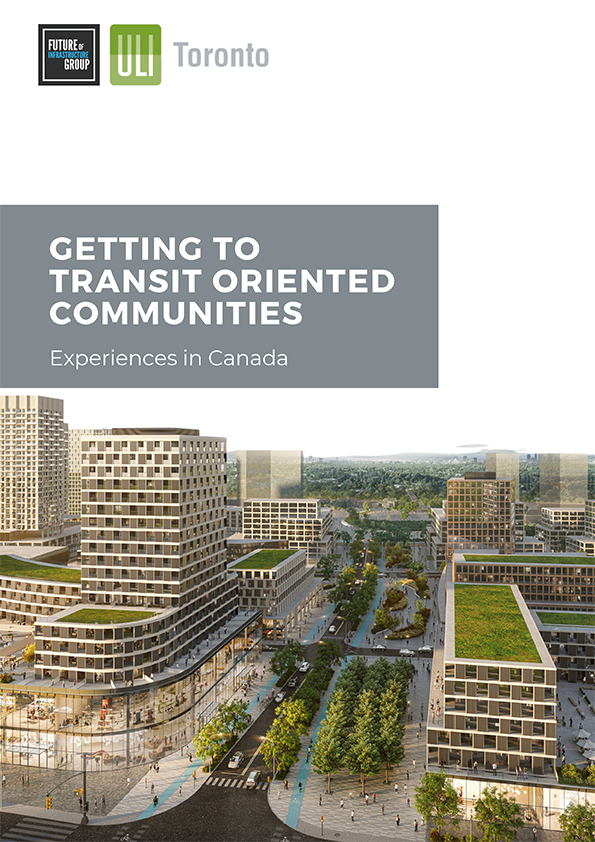Getting to Transit Oriented Communities – Experiences in Canada
Published January 1, 2022
IMAGE CREDIT: eskystudio / Shutterstock.com
The Greater Toronto Region is the fastest growing metropolitan region in Canada and the US with 128,000 more people living in the region over the course of 2019. As with many cities across North America this growth puts strain on housing supply and local infrastructure. A greater emphasis on the connection between infrastructure and land use within Ontario through the development of Transit Oriented Communities provides an opportunity boost housing supply, reduce regional congestion, boost economic development, and reduce environmental impact.
Ontario has committed C$62 billion of investment in transit including dramatically expanding service on the regional rail system, new and expanded subways, new and expanded light rail, and enhanced bus services. With this historic investment being made transit infrastructure, there is an opportunity to leverage the value being created into transforming communities and providing a lasting benefit to all.
These investments involve federal, provincial, and municipal funding. Each level of government also plays different interconnected roles around planning, approvals, subsequent development around transit development, and public service provision. The picture becomes more complex with the local transit agencies, companies delivering infrastructure, real estate developers, landowners, local residents, transit agencies, community groups, and other stakeholders all having different priorities and perspectives on value. These competing perspectives can erode the overall value that should derive from these investments.
There is no singular precedent for the development of TOC in Ontario that can be reviewed as being truly integrated and transformative. While there are many good examples of transit adjacent or oriented development, we are yet to see an example that has been a catalyst for community level transformation. Integrating transit infrastructure with the community is a challenge in the following key areas:
- Value creation, value capture and who benefits
- Time of delivery to success
- Matching the vision with the expectation
The Urban Land Institute Toronto and the Future of Infrastructure Group worked together to organize four workshops based on three station developments in the Toronto region, and one transit system development in Montreal. A mix of expertise examined the challenges and learnings to provide recommendations on unlocking the potential of Transit Oriented Communities. This report provides a summary of the insights gathered.
Barriers
- Organizational and responsibility fragmentation
- Established, inflexible processes
- Lack of dedicated personnel and resources
- Different mindsets between infrastructure and development
- Accepted concept of fair value capture
- Technical challenges and physical barriers
- Integration of stations with other transit and the community
- Availability and provision of public services
- Land ownership and multiple owners
- Role of cars and relationship with transit and development
- Competing priorities
Learnings
- Starting from a clear, shared vision across stakeholders
- Clear governance, expedited processes, and dedicated resources Integrating the station into the community through design and land use
- Policies that enable prioritization of pedestrians and transit
- Building in adaptability to processes by focusing on vision and outcomes
- A fair and consistent mechanism to capture value from transit and infrastructure investment
- Building a mixed-use community where people can live, work, and play that becomes a destination

